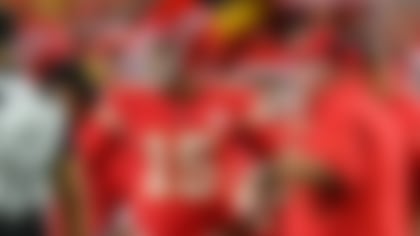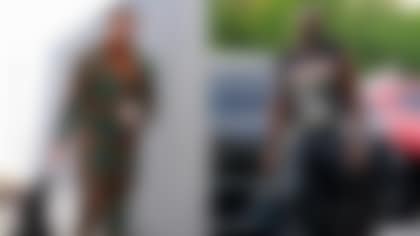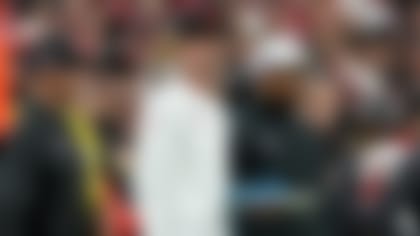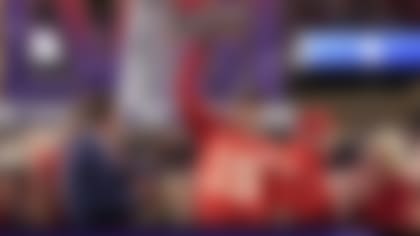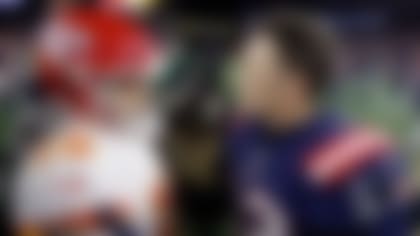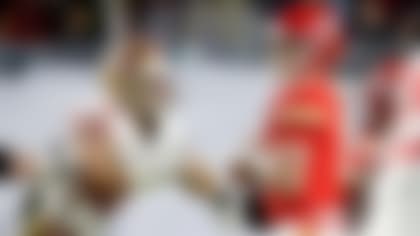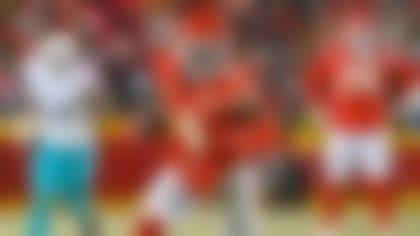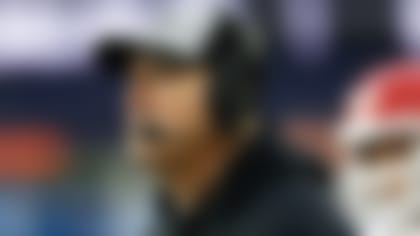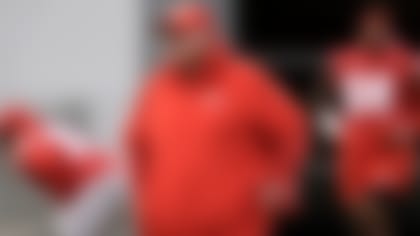In a half-century's time, the Super Bowl has grown from sporting curiosity into an unofficial national holiday.
From the game's humble beginnings at the Los Angeles Memorial Coliseum in January of 1967 to its current incarnation that will be celebrated in the lead up to Super Bowl 50 in Santa Clara, Calif., the NFL's showcase event has produced many iconic moments.
This is a look at those who came through in the high-pressure situations on the game's grandest stage. We will count down the most clutch moments in Super Bowl history, revealing 10 epic moments each week during the playoffs until unveiling the greatest moment the week before the big game.
50. Rypien to Clark buries Bills
Game:Super Bowl XXVI: Washington Redskins 37, Buffalo Bills 24
Date: Jan. 26, 1993
Location: Hubert H. Humphrey Metrodome, Minneapolis, Minn.
However, hopes of an epic comeback were quickly extinguished by the Redskins, who drove 79 yards in 11 plays on a drive capped by quarterback Mark Rypien's 30-yard touchdown strike to wide receiver Gary Clark to go ahead 31-10 and seal the victory.
49. 'Mean' Joe picks off Tarkenton
Game:Super Bowl IX: Pittsburgh Steelers 16, Minnesota Vikings 6
Date: Jan. 12, 1975
Location: Tulane Stadium, New Orleans, La.
Sporting a 9-0 lead in the third quarter, the Steelers' "Steel Curtain" defense stymied the Vikings' best offensive series of the game. Steelers defensive end Dwight White deflected a pass from Vikings quarterback Fran Tarkenton, which was then intercepted by Steelers defensive tackle "Mean" Joe Greene. The "Steel Curtain" kept the Vikings' offense off the scoreboard ... Minnesota's lone score came on a blocked punt that was recovered in the end zone (PAT failed).
48. Adderley pick six caps dynasty
Game:Super Bowl II: Green Bay Packers 33, Oakland Raiders 14
Date: Jan. 14, 1968
Location: Orange Bowl, Miami
With a third consecutive championship -- not to mention back-to-back Super Bowl victories -- in sight, the Packers buried the Raiders in the second half of the second Super Bowl (or, the far less marketable moniker "Second AFL-NFL World Championship Game," as it was called at the time).
The highlight was cornerback Herb Adderley's 60-yard interception return for a touchdown off a Daryle Lamonica pass intended for Fred Biletnikoff. That made the score 33-7, and provided the final dramatic moment for the Vince Lombardi-led Packers. This would be the fifth NFL championship in seven seasons under Lombardi, a run that earned the Packers of the 1960s the honor of being one of the NFL's greatest dynasties.
47. Colts give 'Boys the boot
Game:Super Bowl V: Baltimore Colts 16, Dallas Cowboys 13
Date: Jan. 17, 1971
Location: Orange Bowl, Miami
Two years after the embarrassment of losing Super Bowl III to the New York Jets in the greatest upset in league history, the Colts got some redemption against the Cowboys.
Colts wide receiver/kicker Jim O'Brien's 32-yard field goal as time expired gave the Colts a 16-13 win in one what would become known as the "Blunder Bowl" due to the sloppy nature of play. While a 32-yarder doesn't seem like too great of an accomplishment in this era of pro football, this was no gimme kick in those days. Earlier in the game, O'Brien had a PAT kick blocked, and he had only converted on four of nine attempts in the 30- to 39-yard range during the 1970 season.
46. Bleier recovers onside kick to seal Steelers win
Game:Super Bowl XIII: Pittsburgh Steelers 35, Dallas Cowboys 31
Date: Jan. 21, 1979
Location: Orange Bowl, Miami
Down 35-17, the Cowboys executed a frenzied fourth-quarter rally to trim the Steelers' lead to 35-31 with just 22 seconds left to play. Dallas lined up for a second onside kick, but -- unlike the first one which was recovered by the Cowboys' Dennis Thurman -- fullback Rocky Bleier recovered the kick and thwarted the Cowboys' last chance to snatch victory in a most improbable way.
Earlier in the game, Bleier made a spectacular catch to give the Steelers a 21-14 lead right before halftime.
This was one of the most exciting Super Bowls ever played, and it featured 14 future Pro Football Hall of Fame players as well as two Hall of Fame coaches.
45. Taylor takes it to the house
Game:Super Bowl IV: Kansas City Chiefs 23, Minnesota Vikings 7
Date: Jan. 11, 1970
Location: Tulane Stadium, New Orleans, La.
After the NFL had blown out the AFL in the first two Super Bowls, the AFL had evened the score in time for the AFL-NFL merger to be completed for the 1970 season.
44. Young gets that monkey off his back
Game:Super Bowl XXIX: San Francisco 49ers 49, San Diego Chargers 26
Date: Jan. 29, 1995
Location: Joe Robbie Stadium, Miami
49ers quarterback Steve Young's 44-yard touchdown pass to receiver Jerry Rice on the third offensive play of the game set in motion a record-setting game for Young. At the time, it was the fastest touchdown ever scored in a Super Bowl (a record later broken by the Chicago Bears' Devin Hester in Super Bowl XLI). Young would connect with running back Ricky Watters for a 51-yard touchdown play to give the 49ers a 14-0 lead less than five minutes into the game. That was the fastest second touchdown scored by a team in Super Bowl history. Young finished the game with a Super Bowl-record six touchdown passes.
This was a pivotal performance for Young, who had (with some degree of controversy) replaced a legend in San Francisco in Joe Montana. Montana had led the 49ers to four Super Bowl wins, Young provided the franchise with a then-record fifth Super Bowl triumph.
43. Dolphins' goal-line stand dooms Vikings
Game:Super Bowl VIII: Miami Dolphins 24, Minnesota Vikings 7
Date: Jan. 13, 1974
Location: Rice Stadium, Houston, Texas
A pivotal moment in the Dolphins' second consecutive Super Bowl win came in the second quarter when Miami had a 17-0 lead. The Vikings' best drive of the game put the team on the brink of narrowing the Dolphins' lead right before halftime and seize precious momentum -- not to mention the opening second-half kickoff, too. Instead, the Dolphins stuffed the Vikings on a fourth-and-goal play, with linebacker Nick Buoniconti forcing a fumble that was recovered by safety Jake Scott. The Vikings ran running back Oscar Reed on three consecutive plays inside the 10-yard line, but couldn't punch the ball into the end zone against the "No-Name Defense."
The Dolphins followed up their perfect 1972 season with another championship the following year, having posted a 32-3 record over two seasons. But the brief dynasty ended there. The Dolphins would not win another playoff game until 1982, when it reached Super Bowl XVII, but lost to the Washington Redskins. Another Super Bowl loss followed two years later, and the Dolphins haven't played in the sport's biggest game since.
42. Jones sets return record
Game:Super Bowl XLVII: Baltimore Ravens 34, San Francisco 49ers 31
Date: Feb. 3, 2013
Location: Superdome, New Orleans, La.
Sporting a 21-6 lead at halftime, the Ravens received the opening kickoff of the second half and Jacoby Jones promptly went 108 yards for the longest-scoring play in Super Bowl history. It was his second touchdown in the game.
41. Bears defense rises to occasion
Game:Super Bowl XX: Chicago Bears 46, New England Patriots 10
Date: Jan. 26, 1986
Location: Superdome, New Orleans, La.
This one got ugly, but for a brief period of time early on, the game was close. That was until Bears defensive end Richard Dent -- the eventual game MVP -- forced Patriots running back Craig James to fumble. The Bears held a 6-3 lead at that point, but two plays later Bears fullback Matt Suhey rumbled into the end zone on an 11-yard touchdown run to increase the lead to 13-3 and the rout was on.
Follow Jim Reineking on Twitter @jimreineking.


